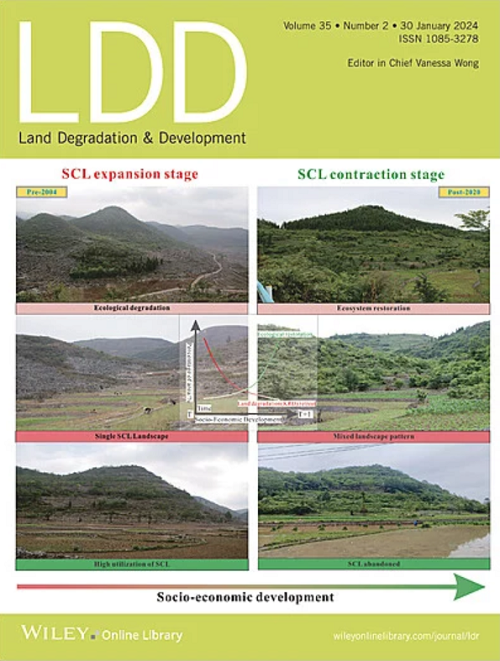Population Urbanization and Urban Water Security in China: Challenges for Sustainable Development Under SDGs Framework
IF 3.6
2区 农林科学
Q2 ENVIRONMENTAL SCIENCES
引用次数: 0
Abstract
China's rapid population urbanization over recent decades has posed significant challenges to sustainable urban development, particularly in ensuring water resource security. Within the sustainable development goals (SDGs) framework, this study explores the multidimensional mechanisms underlying population urbanization and water resource security by integrating spatial and econometric analyses. Spatial kernel density estimation and obstacle degree model were employed to assess the dynamic trends of population urbanization and water resource security across China. Subsequently, econometric analyses using random effects models, difference‐in‐differences models, and spatial durbin models were conducted to evaluate causal relationships and spatial dependencies. Empirical results demonstrate that China's population urbanization enhances water resource security largely due to the agglomeration effect of population density and improved water infrastructure development. However, regional economic growth often occurs at the expense of environmental quality, highlighting the critical need for strengthened protection of wetlands and forests and enhanced regulation of industrial wastewater discharge. Further analysis confirms that: (1) the impact of population urbanization on water resource security remains consistent with the benchmark regression results in both short‐term and long‐term effects; (2) population density and years of education positively moderate the relationship between population urbanization and water resource security; (3) spatial heterogeneity is evident, showing negative externalities from population urbanization in eastern and central provinces on neighboring regions' water resource security, whereas population urbanization in western provinces significantly improved local water resource security without significant externalities. Based on these insights, this study proposes targeted management strategies to mitigate negative spillovers, enhance regional cooperation, and integrate water resource governance into sustainable urban planning.中国人口城市化与城市水安全:可持续发展目标框架下的可持续发展挑战
近几十年来,中国人口的快速城市化给城市可持续发展带来了重大挑战,特别是在确保水资源安全方面。在可持续发展目标框架下,通过空间分析和计量分析相结合的方法,探讨了人口城市化与水资源安全的多维机制。采用空间核密度估计和障碍度模型对中国人口城市化与水资源安全的动态趋势进行了评价。随后,采用随机效应模型、差中差模型和空间durbin模型进行计量经济分析,以评估因果关系和空间依赖性。实证结果表明,中国人口城市化对水资源安全的提升主要是由于人口密度的集聚效应和水利基础设施发展水平的提高。然而,区域经济增长往往是以牺牲环境质量为代价的,这突出表明迫切需要加强对湿地和森林的保护以及加强对工业废水排放的管制。进一步分析表明:(1)人口城市化对水资源安全的影响在短期和长期效应上都与基准回归结果保持一致;(2)人口密度和受教育年限正向调节人口城市化与水资源安全的关系;③空间异质性明显,东部和中部省份人口城镇化对周边地区水资源安全具有负外部性,西部省份人口城镇化对周边地区水资源安全具有显著改善作用,但外部性不显著。基于这些见解,本研究提出了有针对性的管理策略,以缓解负面溢出效应,加强区域合作,并将水资源治理纳入可持续城市规划。
本文章由计算机程序翻译,如有差异,请以英文原文为准。
求助全文
约1分钟内获得全文
求助全文
来源期刊

Land Degradation & Development
农林科学-环境科学
CiteScore
7.70
自引率
8.50%
发文量
379
审稿时长
5.5 months
期刊介绍:
Land Degradation & Development is an international journal which seeks to promote rational study of the recognition, monitoring, control and rehabilitation of degradation in terrestrial environments. The journal focuses on:
- what land degradation is;
- what causes land degradation;
- the impacts of land degradation
- the scale of land degradation;
- the history, current status or future trends of land degradation;
- avoidance, mitigation and control of land degradation;
- remedial actions to rehabilitate or restore degraded land;
- sustainable land management.
 求助内容:
求助内容: 应助结果提醒方式:
应助结果提醒方式:


